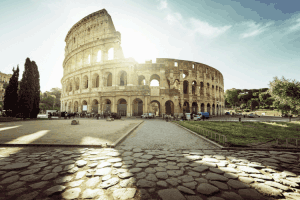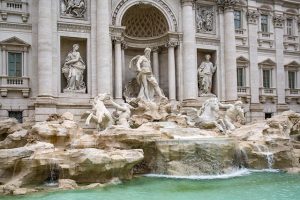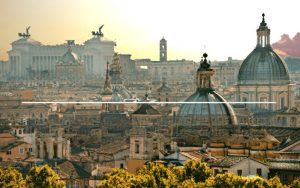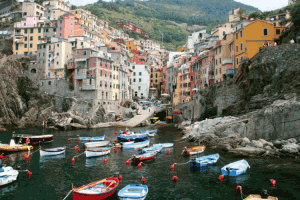Ever been to Rome? Then you would agree to the fact that Roman Colosseum is one of the coolest places in there to explore. There is a rich history behind the Colosseum, and it is worth to be aware of the facts. Keep on reading and we will share them with you.
In ruins, still magnificent- the Roman Colosseum is a massive stone amphitheater. It is a great pride for Italy’s capital and draws overflowing tourists. And why not, this iconic architecture is among the incredible 7 wonders of the world, voted by around 90 million people-phew! Also, UNESCO has labelled it in the World Heritage monuments.
Well, these are the facts that have met the eyes, but what about the other details- how it was built, what was the purpose, why did it have holes in it? All the questions will drift to the answer to why it’s a masterpiece. Let’s help you get closer to Colosseum.
What is special about the Roman Colosseum?
The Roman Colosseum is special for numerous reasons. Firstly, it is an architectural marvel, showcasing the incredible engineering skills of the ancient Romans. The amphitheater’s design, with its complex system of arches, vaults, and tiered seating, was a groundbreaking achievement for its time.
Secondly, the Colosseum is a testament to the grandeur and power of the Roman Empire, as it was used to host elaborate public spectacles that entertained the masses and celebrated Roman supremacy. Furthermore, the Colosseum has stood the test of time, surviving for nearly two millennia despite facing various challenges, including natural disasters, neglect, and vandalism.
Its enduring presence serves as a tangible link to the past and a symbol of Rome’s rich history. Lastly, the Colosseum’s modern-day significance as a symbol against capital punishment adds a layer of meaning to this ancient structure, demonstrating its ongoing relevance and cultural impact in the contemporary world.
Facts about Roman Colosseum
1.It is recognised as the largest Roman amphitheatre ever built.
It is an outstanding elliptical structure of 188 meters long, 156 meters wide and 48 meters high. It spreads over a base area of 24,000 m². The mega construction began in AD 70-72 under Emperor Vespasian and in AD 80, his son Titus inaugurated the Colosseum.
2.It was established on a former lake
Heard about the strange Roman emperor Nero? He was infamous for killing family members and fiddling. The story is related to the same dictator, who for his pleasure had installed a gigantic villa, Domus Aurea. This featured an artificial lake.
And the palace entrance had a giant bronze statue of Nero. In 68 CE, this egoistic emperor committed suicide, and all his ornaments were destroyed and buried over which Baths of Trajan was set up. And the man-made lake became the site for the Colosseum, which today stands east to the Roman Forum, composed of travertine, tuff, ad brick-faced concrete.
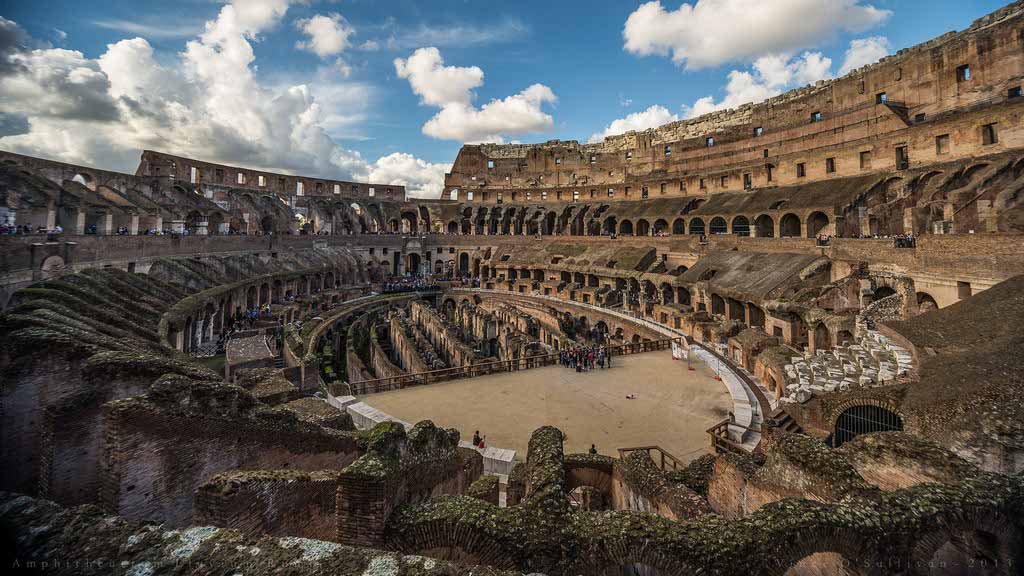
3.It was officially known as the Flavian Amphitheater
The emperors Vespasian, his son Titus, and Domitian, the three were known as the Flavian Emperors. This was the reason for Colosseum to be named in Latin as the Ampitheatrum Flavium. Also, the statue of Nero which later got the face of the sun and was famed as a sun-God statue was called a Colossus, and many scholars believe that this could be where the Flavian Amphitheater got its current nickname.
4.It was designed by a poet
Unlike today, where a building gets its blueprint from a single designer/architect. But this Colosseum in medieval times was designed by the ancient Roman poet Virgil.
The identity of the Colosseum’s architect is not known with certainty. While some ancient sources mention various individuals who may have been involved in its design or construction, there is no definitive evidence to attribute the design to a single person, including the poet Virgil, who died long before the Colosseum was built.
5.It is built by 60,00 thousand Jewish Slaves in 10 years
The Colosseum was indeed built using slave labor, as was common practice in ancient Rome for large-scale construction projects. However, the exact number and origin of the slaves involved in the Colosseum’s construction are not known with certainty. While some slaves may have been brought from Judea following the Roman conquest, the claim that 60,000 Jewish slaves built the Colosseum in 10 years is not widely accepted by historians.
6.It could hold 50,000-80,000 spectators
The size of the stadium is enormous, as an average of 65,000 audiences could be seated here. It could provide seating space to an astounding number of 87,000 spectators, making it the largest amphitheater in the world, ranked by the Guinness World Records. In history, it used to be the centre for public entertainment with gladiatorial contests, spectacles like mock sea battles, animal hunts, demonstration of famous battles, and moviemaking on Classical mythology.
7.The inaugural was extraordinary bizarre
There were 100 days of recreational activities for the enjoyment of the public, which continued for centuries to come- gladiatorial games until the 15th century and animal hunts until the 6th century. Thousands of observers joined this violent entertainment where wild and outlandish animals were chased, prisoners executed and religious saints hunted down by lions. In the feast of showing this Roman power and strength, there were scores of elephants, tigers, lions, bears, hippos, and lot more creatures wounded and dead. 9,000 animals were killed during the inaugural ceremonies while 11,000 met their end in the 123-day festival.
8.There was a Gate of Life and Gate of Death
Out of the 80 entrances in Colosseum, 76 were opened to the general public, while the 4 were tucked in the prominent directions. Important and prestigious guests used the North and South Gate and the rest two were occupied by the Gladiator game. In the east was the Gate of Life where the gladiators would enter for the game to begun and to the west was the Gate of Death where dead gladiators were carried out. The last gladiator fight was held in 435 CE.
9.Only two-thirds of the original structure stands today
Yes, the tourist destination that invites 4 million people per year to see and explore its marvel is actually not the entire construction. More than half of its look has been damaged as a result of weather, natural disasters, ignorance, and theft. The maximum destruction occurred due to the earthquakes of 847 AD and 1231 AD.
10.The idea behind its construction serves multiple reasons
Besides being the entertainment junction for the Roman citizens, it had two other purposes as well. The Flavian dynasty emperors wanted to gain the trust of Romans and become their popular ruler, and thereby, they built it as a gift. Also, it was made to surpass the level of engineering and show the world the class of Roman architecture.
11.It has mysterious holes within the walls
The outer wall of Colosseum was put up with more than 100,000 cubic meters of travertine stones, which was held together by 300 tons of iron clamps. This iron became highly valued later. As the population of the city declined, its hidden materials got stolen and during this proliferation of iron for the creation of other edifices or weapons, thousands of holes were made by the workers in the walls.
12.It was later robbed for its building materials
Colosseum displayed a beautiful range of stones and marbles which was plundered and used for the construction of the cathedrals of St. John and St. Peter Lateran, the Palazzo Venezia, and other monuments.
13.It is a symbol against capital punishment
Since 1948, Italy has been against the capital or death punishment and has consequently eliminated it. This Roman Colosseum stands for the sake of peaceful message and anytime anywhere in the world when the death punishment is sentenced, the lights at the Colosseum changes from white to gold.
14. The Colosseum had a retractable roof
The Colosseum was equipped with a remarkable feat of ancient engineering: a retractable roof known as the velarium. This roof was made of a network of ropes, pulleys, and sailcloth, and was designed to protect spectators from the sun and rain. The velarium was operated by a team of skilled sailors, who would manipulate the ropes to extend or retract the roof as needed. This innovative feature added to the comfort of the spectators and allowed events to take place in various weather conditions.
15. The Colosseum had an intricate underground network
Beneath the arena floor of the Colosseum lays a complex network of tunnels, chambers, and elevators known as the hypogeum. This underground structure was used to store animals, equipment, and stage sets for the various events held in the amphitheater.
The hypogeum also featured a series of mechanical lifts and pulleys that allowed animals, gladiators, and stage sets to be quickly and efficiently raised to the arena floor. This intricate underground system was a testament to the advanced engineering capabilities of the ancient Romans and played a crucial role in the smooth operation of the Colosseum’s events.
Now that was some exciting story to tell. Do comment which Roman Colosseum fact did you find the most fascinating.
